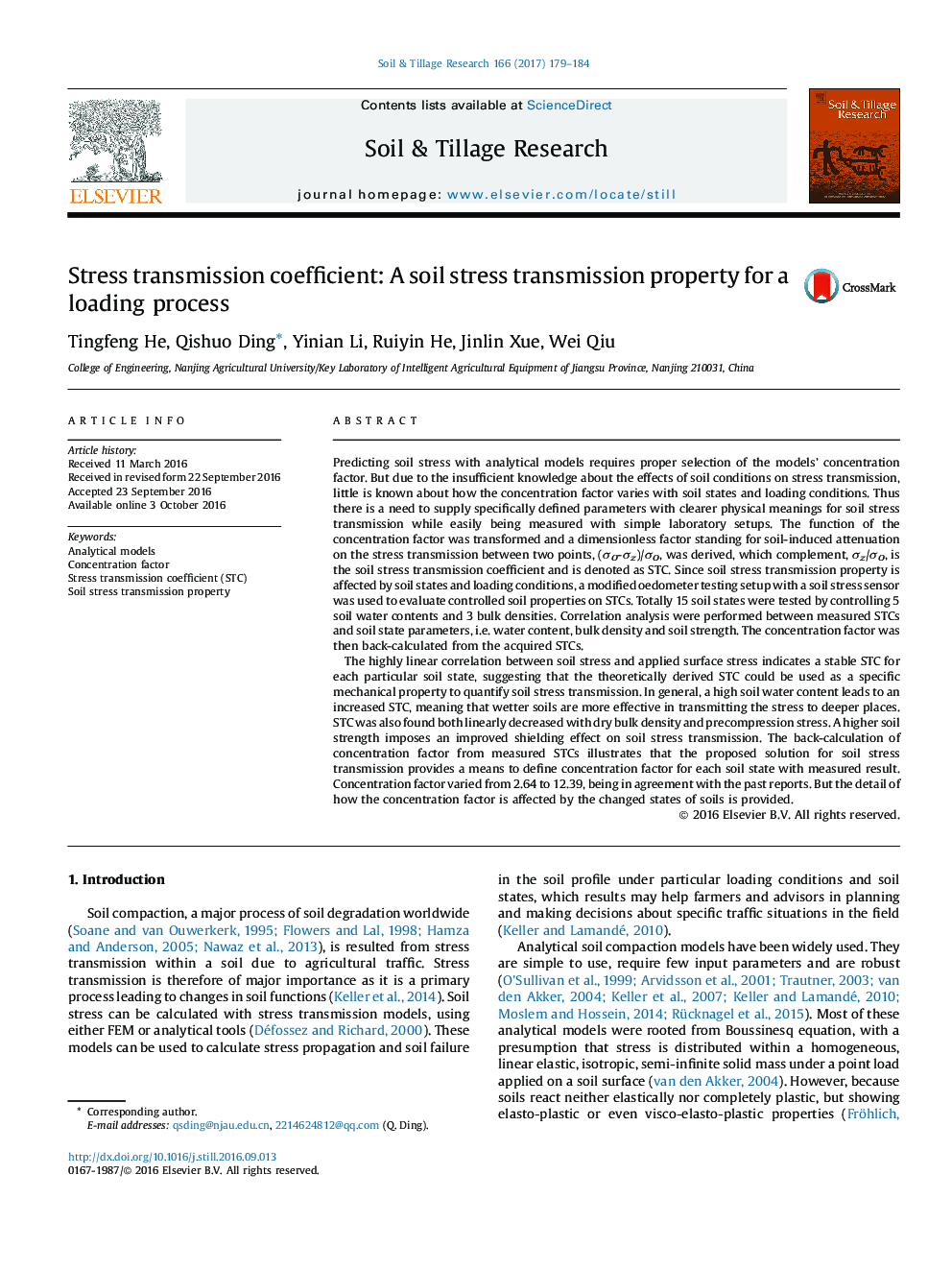| کد مقاله | کد نشریه | سال انتشار | مقاله انگلیسی | نسخه تمام متن |
|---|---|---|---|---|
| 4927621 | 1431837 | 2017 | 6 صفحه PDF | دانلود رایگان |
- Stress transmission coefficient (STC) is derived as a parameter for soil stress transmission.
- Modified oedometer test with stress sensor can be used to measure STCs.
- STC was sensitive to changes of soil physical conditions.
- Concentration factor is analytically inter-related with STC.
Predicting soil stress with analytical models requires proper selection of the models' concentration factor. But due to the insufficient knowledge about the effects of soil conditions on stress transmission, little is known about how the concentration factor varies with soil states and loading conditions. Thus there is a need to supply specifically defined parameters with clearer physical meanings for soil stress transmission while easily being measured with simple laboratory setups. The function of the concentration factor was transformed and a dimensionless factor standing for soil-induced attenuation on the stress transmission between two points, (Ï0-Ïz)/Ï0, was derived, which complement, Ïz/Ï0, is the soil stress transmission coefficient and is denoted as STC. Since soil stress transmission property is affected by soil states and loading conditions, a modified oedometer testing setup with a soil stress sensor was used to evaluate controlled soil properties on STCs. Totally 15 soil states were tested by controlling 5 soil water contents and 3 bulk densities. Correlation analysis were performed between measured STCs and soil state parameters, i.e. water content, bulk density and soil strength. The concentration factor was then back-calculated from the acquired STCs.The highly linear correlation between soil stress and applied surface stress indicates a stable STC for each particular soil state, suggesting that the theoretically derived STC could be used as a specific mechanical property to quantify soil stress transmission. In general, a high soil water content leads to an increased STC, meaning that wetter soils are more effective in transmitting the stress to deeper places. STC was also found both linearly decreased with dry bulk density and precompression stress. A higher soil strength imposes an improved shielding effect on soil stress transmission. The back-calculation of concentration factor from measured STCs illustrates that the proposed solution for soil stress transmission provides a means to define concentration factor for each soil state with measured result. Concentration factor varied from 2.64 to 12.39, being in agreement with the past reports. But the detail of how the concentration factor is affected by the changed states of soils is provided.
Journal: Soil and Tillage Research - Volume 166, March 2017, Pages 179-184
